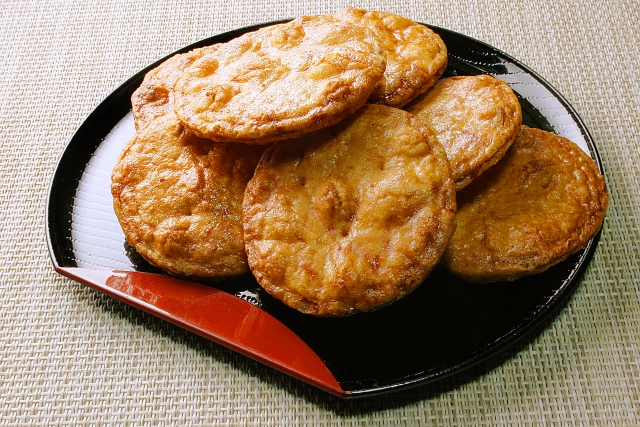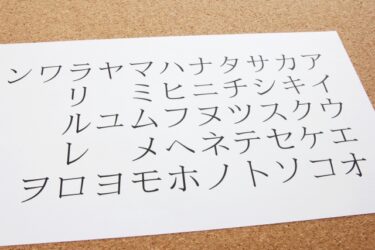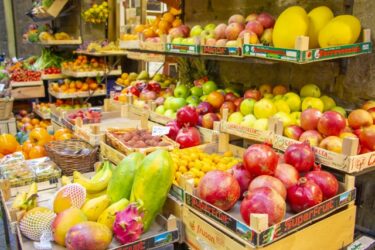Senbei are one of Japan’s oldest and most beloved snacks, dating back centuries. Made primarily from rice, these crispy crackers come in various flavors, textures, and shapes, making them a versatile and popular treat for both Japanese people and visitors alike. From light and crunchy varieties to hard and savory ones, senbei reflect Japan’s rich culinary traditions and regional diversity. Let’s explore the different types of senbei, how they’re made, and what makes them so special.
Common Types of Senbei
- Shoyu Senbei (Soy Sauce Rice Crackers)
The most iconic type of senbei, shoyu senbei is brushed with soy sauce as it bakes, giving it a savory, umami-packed flavor. These are often crisp and have a golden-brown color, making them a favorite for those who enjoy salty snacks. - Zarame Senbei (Sugar-Crystal Rice Crackers)
Zarame senbei is a sweet-salty variety coated with large sugar crystals on the surface. The combination of sweet zarame sugar and savory soy sauce creates a unique flavor contrast that is incredibly satisfying. - Ume Zarame Senbei (Plum Sugar Rice Crackers)
This variation adds a tangy plum (ume) flavor to the sweet zarame senbei. The sourness of the plum balances the sweetness, creating a more complex taste with a fruity edge. - Konbu Senbei (Kelp Rice Crackers)
Konbu senbei are flavored with kombu (kelp), giving them a rich, savory taste that’s reminiscent of the sea. The use of konbu adds an umami flavor that is both subtle and delicious. - Kabukiage (Deep-Fried Senbei)
Unlike baked senbei, kabukiage is deep-fried, giving it a light, crispy, and sometimes slightly oily texture. These are usually flavored with a sweet soy glaze, offering a crunchier bite and a sweet-savory flavor. - Nori Senbei (Seaweed Rice Crackers)
Nori senbei are wrapped in nori (seaweed) after being brushed with soy sauce. The seaweed adds an extra layer of umami and a slightly softer texture, enhancing the flavor of the crunchy rice cracker. - Genkotsu Senbei (Hard Rice Crackers)
These senbei are thicker and much harder than typical varieties, offering a dense, crunchy bite. They require more effort to chew but are loved for their satisfying, firm texture. - Ebi Senbei (Shrimp Rice Crackers)
Ebi senbei is flavored with dried shrimp, giving it a light seafood taste. These are often lighter in texture and have a delicate shrimp aroma, popular among seafood lovers. - Arare
Arare are small, bite-sized rice crackers, often flavored with soy sauce or seaweed. They are typically eaten as a snack on their own or sometimes mixed with nuts or other small treats. - Togarashi Senbei (Spicy Rice Crackers)
For those who like a bit of heat, togarashi senbei is flavored with togarashi (Japanese chili pepper), offering a spicy kick alongside the typical savory soy flavors.
How Senbei Are Made
Senbei are traditionally made from non-glutinous rice (uruchimai) or wheat flour, though some regional varieties use glutinous rice (mochigome) for a chewier texture. The rice is steamed, shaped, and then either baked or deep-fried to create its crispy texture. Seasonings such as soy sauce, salt, or sugar are added during or after baking, depending on the variety.
In traditional methods, the crackers are baked over a charcoal grill, which gives them a smoky flavor. Modern production methods often use electric ovens, but some artisanal producers still stick to the old-fashioned techniques for a more authentic taste.
Famous Senbei Regions in Japan
Senbei are enjoyed all over Japan, but certain regions are particularly famous for their unique styles of rice crackers:
- Soka (Tokyo Region)
Soka is one of the most famous senbei-producing areas in Japan. Soka senbei are known for their crisp texture and soy sauce flavor. The city has a long history of producing these crackers, and many traditional shops can still be found there. - Niigata
Niigata is renowned for its rice production, so it’s no surprise that it’s also famous for its high-quality senbei. The senbei from this region often have a rich, umami flavor and are made from some of the best rice in the country. - Nara
Nara, one of Japan’s ancient capitals, produces unique rice crackers that often have a more traditional, thicker shape. They can be harder and have more savory flavors like miso or soy sauce. - Aizu (Fukushima)
Known for its hard genkotsu senbei, Aizu produces rice crackers that have a firm, crunchy texture and are typically seasoned with simple salt or soy sauce.
Texture and Shapes of Senbei
One of the most interesting aspects of senbei is the variety of textures and shapes available. From thin and crispy to thick and hard, the consistency can vary widely:
- Light and Crispy: Many senbei, like shoyu senbei, are light and crunchy, perfect for casual snacking. These are usually thin and break easily when bitten into.
- Hard and Crunchy: Genkotsu senbei and other thick varieties offer a much harder texture, requiring more effort to chew but providing a satisfying crunch.
- Soft and Chewy: Some senbei, especially those made from glutinous rice, have a softer, chewier texture. These are less common but still loved by those who enjoy a more tender bite.
Senbei also come in different shapes:
- Round: The most common shape, especially for traditional shoyu or nori senbei.
- Square or Rectangular: Less common but often found in harder varieties like genkotsu senbei.
- Mini-sized: Arare and other bite-sized crackers are small and easy to eat, often mixed with nuts or dried fish for a snack mix.
Conclusion
Senbei are more than just rice crackers—they are a significant part of Japan’s snacking culture, offering a wide range of flavors, textures, and regional varieties. Whether you prefer the savory taste of soy sauce, the sweetness of zarame sugar, or the spicy kick of togarashi, there’s a senbei for everyone. Foreign visitors to Japan should definitely give these traditional snacks a try—they are not only delicious but also a perfect way to experience a piece of Japan’s rich culinary heritage. From the light, crispy shoyu senbei to the dense and hard genkotsu varieties, the world of senbei is vast and endlessly interesting.






